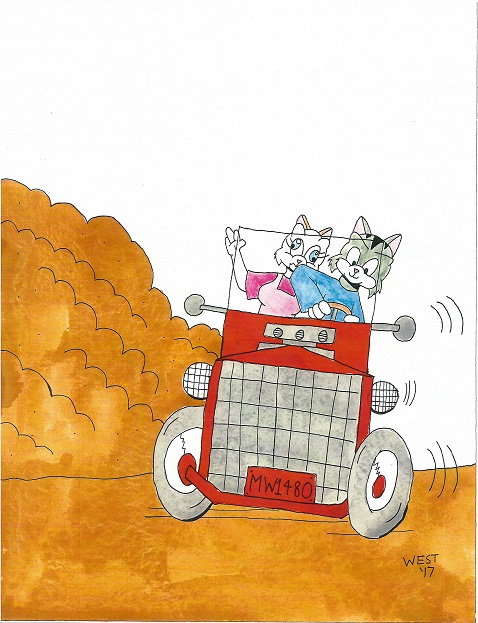Today, I have something of personal interest to me that I find handy for inspiration. It’s an art book; many exist out there for television and feature films. These books show the creative process behind such franchises like Star Wars, Lord of the Rings, and so on. They serve as good inspiration for your own creative work plus anyone looking into working in the entertainment industry (concept art, film, animation, etc) can get an idea of how a finished product gets done from start to finish. But enough about that. Today, I have Art of Atari by Tim Lapetino (Dynamite Entertainment, 2016).

This hardcover art book tells much about Atari during its inception in the early 1970s, its zenith in the late 1970s/early 1980s and its demise with lingering on through the rest of the 1980s into the 1990s. The text has plenty of exposition on how Atari was founded, its rise and its many products like the various arcade machines, home consoles (Atari 2600, Atari 5200, Atari 7800), and unreleased prototypes.

The meat of the book is dedicated to artwork, advertisements and especially game related pieces from Atari titles, both from the company itself and licensed from elsewhere (Pacman, ET). Artwork from box covers gets shown off; not only are these gorgeous to look at but we meet the unsung heroes who illustrated these pieces. For a long time, many of us Atari fans pondered who created these. We meet many of the neat illustrators like Hiro Kimura, Susan Jakael, Cliff Spohn and many more gifted individuals.

It’s really incredible to read about Atari and the people involved with it. Nowadays, video games and computer games are an indelible part of our culture. But when Atari came along, video games were completely unknown. They were responsible for making video games what they are today and they were pioneers in uncharted territory.
The art is even more intriguing. Back then in the 1970s and 1980s, video game and computer graphics were very primitive compared to what we have now. The many illustrators for Atari (both in-house and freelance) were responsible for putting forward an image to customers out there of what the game was all about. The images on the boxes showing off dragons, spaceships, soldiers, cowboys, knights, etc really caught people’s attention and painted a vivid picture in their mind of what the Atari games were all about. As best-selling writer Ernest Cline says in his foreword –
“The box artwork was an essential part of the ritual of escape you experienced each time you played an Atari game. In a player’s mind, the artwork on the label would be forever linked to the digital artifact inside.”
Mr. Lapetino’s book not only serves as a time capsule of a different era; it serves as a stark contrast to nowadays. Video games are so ingrained in our culture today. In terms of the artwork for developing and promoting a game, digital art is very common, rendered with graphics tablets on expensive hardware with high-end software (Photoshop, Illustrator, Painter, SAI and so on). I have nothing against digital art; I have a subscription to ImagineFX. But it’s fascinating to see illustrators working their trade with traditional, time-tested tools like inks, acrylic, gouache and watercolor. While traditional tools are still used today alongside digital tools, the old ways were what they had in Atari’s heyday.
This book is worth picking up if you like retro culture (especially of the 1970s or 1980s), retro video games or just another art book. It’s even inspired me. I just did a cover earlier today inspired by the Atari 2600 game box art called Dodge’Em.

“Rusty’s Hot Rod”, Pen & Acrylic on 9×12 inch watercolor paper
I plan to use that as a cover in the near future.
Enough about that though – be sure you get a copy of Art of Atari today!
